 Eugène Carrière, The First Communion, 1896
Eugène Carrière, The First Communion, 1896
Eugène Carrière’s painting “The First Communion” is the most haunting painting of a little girl dressed for her First Communions that I have seen. Quite a few examples of this motif can be found in the late nineteenth century art, but no painting I’ve seen is this ghostly. The gentle figure of a young girl arises from the surrounding darkness. All of Carrière’s paintings have this distinct atmosphere and the figures in them seem to emerge from the brown-grey fog or a muddy swamp. The girl’s hands are clasped in her lap and she seems so sombre and wraith-like; her white formal gown and veil are transformed into a sea of greys by Carrière’s brush, as if they’re made of ashes. Usually the girls painted in their white First Communion dresses look angelic, smiling and lively, but Carrière’s portrayal of this motif instantly takes away the little girl’s angelic, innocent appeal because she seems more like a ghost than a real girl; no smile, no rosy cheeks on that face.
As I gaze at the girl’s face more, a scene from the film “The Others” (2001) comes to mind; a very devout Catholic woman (played by Nicole Kidman) lives alone in a lonely, forgotten mansion surrounded with constant fog with her two children and servants, desperately awaiting her husband’s return from the war. In one scene she lets her daughter try on the new snow-white dress and veil for her First Communion. The mother leaves the room for awhile and when she returns, she finds her daughter playing with a doll, but her face isn’t her own: it’s a horrible and frightening face of an old woman. Of course, it was only an illusion, but Carrière’s girl seem to me capable of transforming into something else, it isn’t static and final in my eyes, it moves and changes; I can imagine the girl’s dress changing from perfectly white to this shade of grey; I can imagine her eyes losing shine and her face loosing form; this is but one state of melancholy decay, she will sink even more into the darkness that surrounds her.
In all of Carrière’s paintings, I feel like his figures are transitioning from the palpable, material world to a mystical, airy one, their forms are distilling, they are fading away… Odilon Redon, a fellow Symbolist artist who used colour and shapes very differently though, wrote this of Carrière’s art: “…opaque limbos where pale, morbidly human faces float like seaweed: that is Carrière’s painting. It does not have the flavor of solid reality, but remains in the muted regions of the first elaboration, which are favorable to visions, and never appears or flowers in the shining brightness of the solar prism.” My view of Carrière’s paintings varies from day to day, from painting to painting; sometimes the haunting and ghostly mood of his portraits really captivates me, and other times, his colour palette is devastatingly depressing and monotonous. Carrière’s dislike, or mistrust, of colour is truly remarkable. I really love this painting “The First Communion” because of its motif really, but some of his other paintings tend to drain me due to their lack of vibrant colour. And now, here are some other examples of the same motif but in a very different mood and style. With their white gowns and veils, the First Communion girls look like little brides.
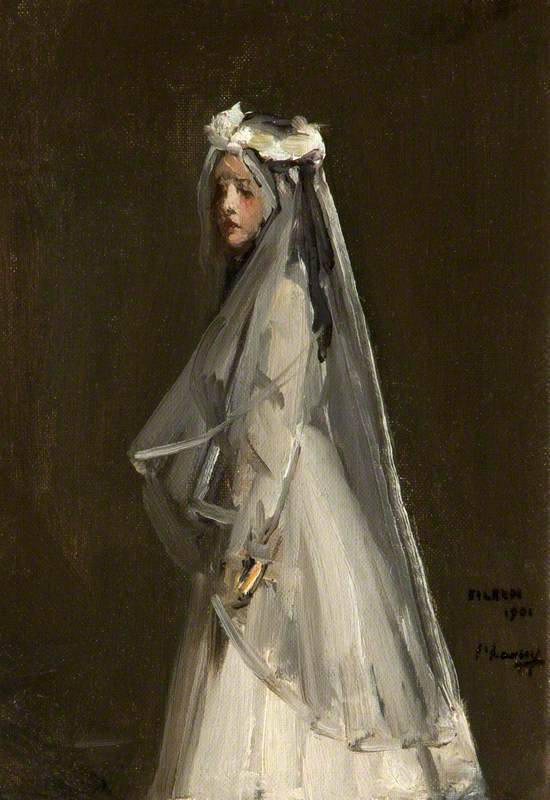
Sir John Lavery, Eileen, Her First Communion, 1901
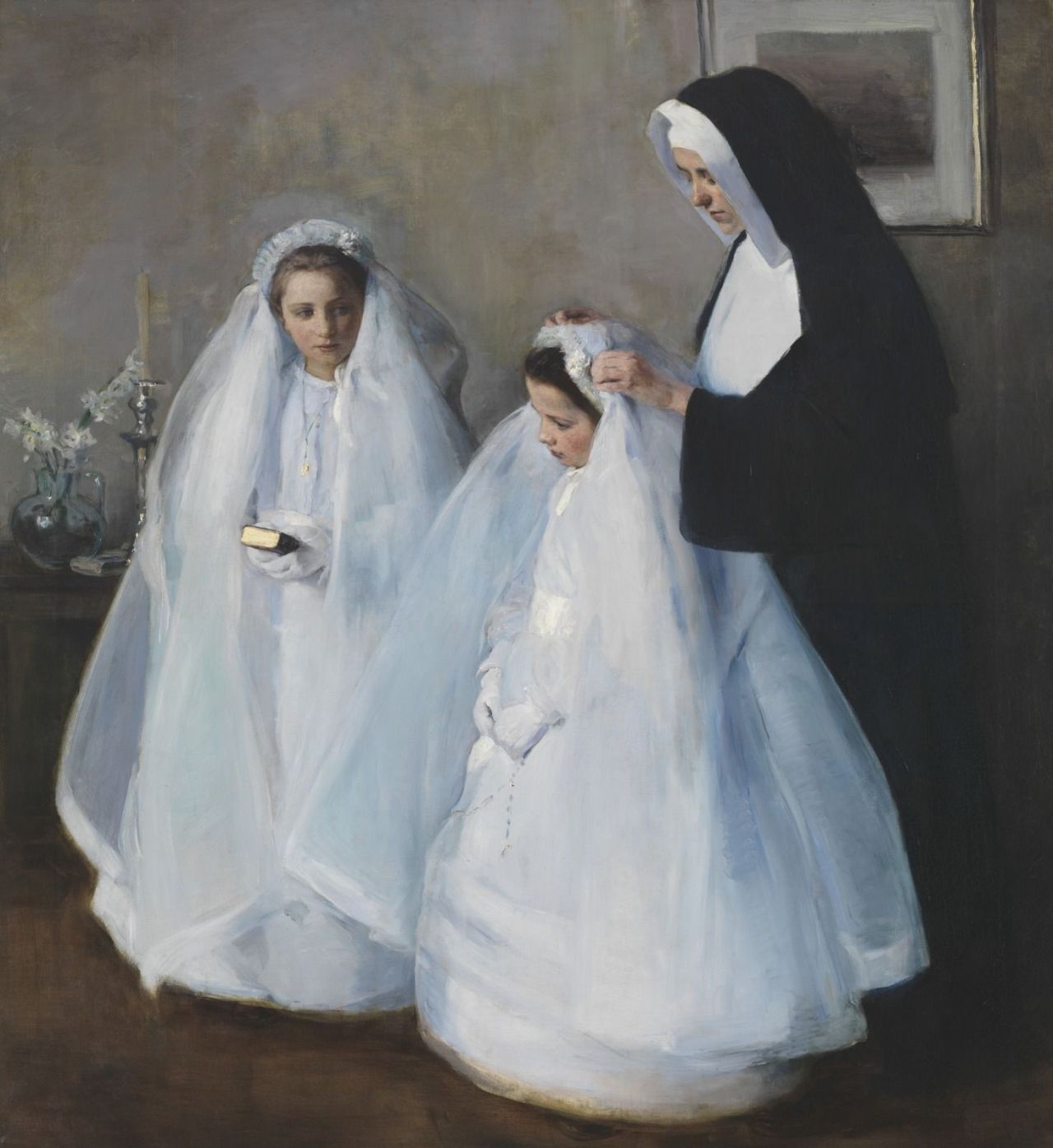
Elizabeth Nourse, The First Communion (La Première communion), 1895

Henri Martin, First Communion, 1891
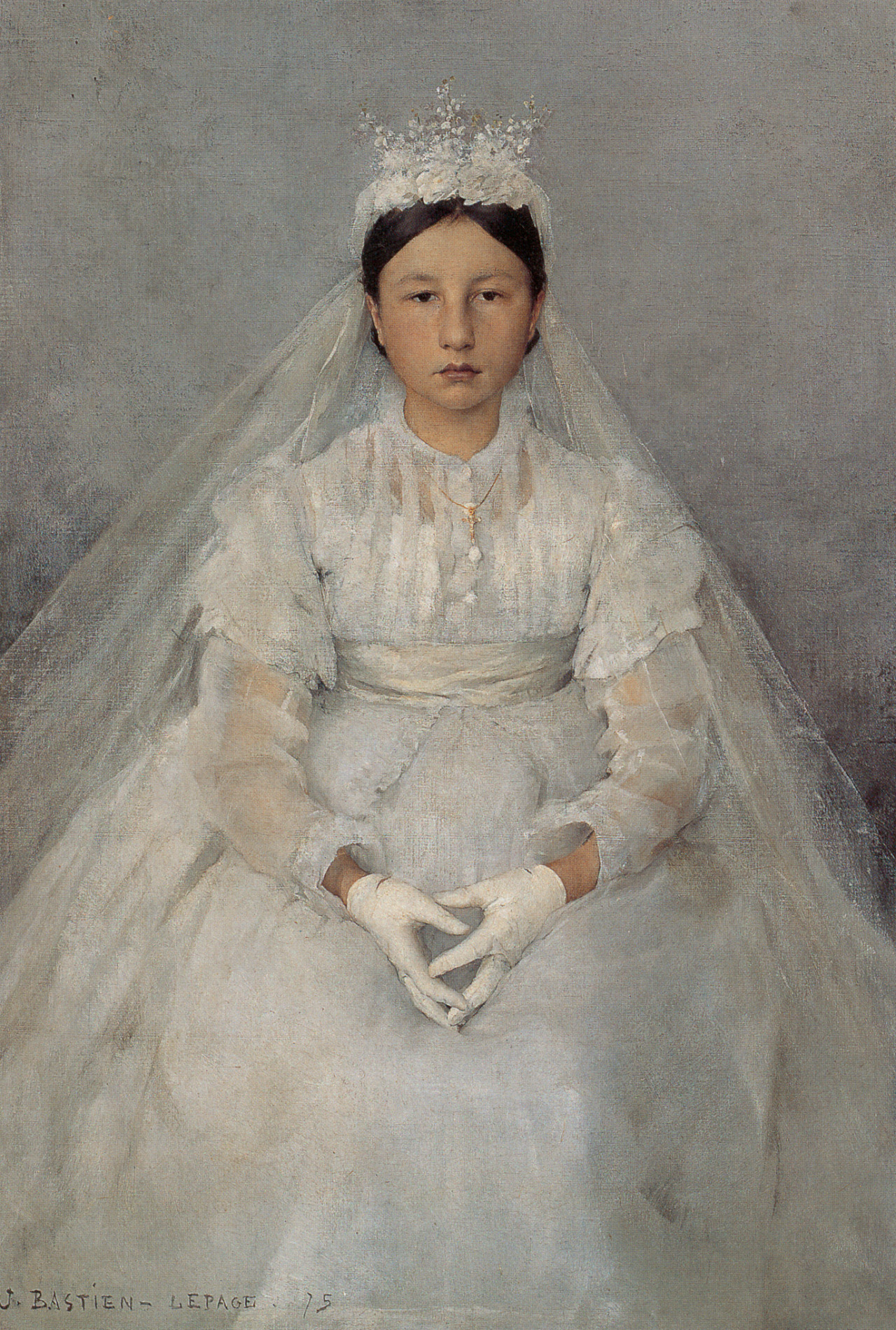 Jules Bastien-Lepage, First Communion, 1875
Jules Bastien-Lepage, First Communion, 1875
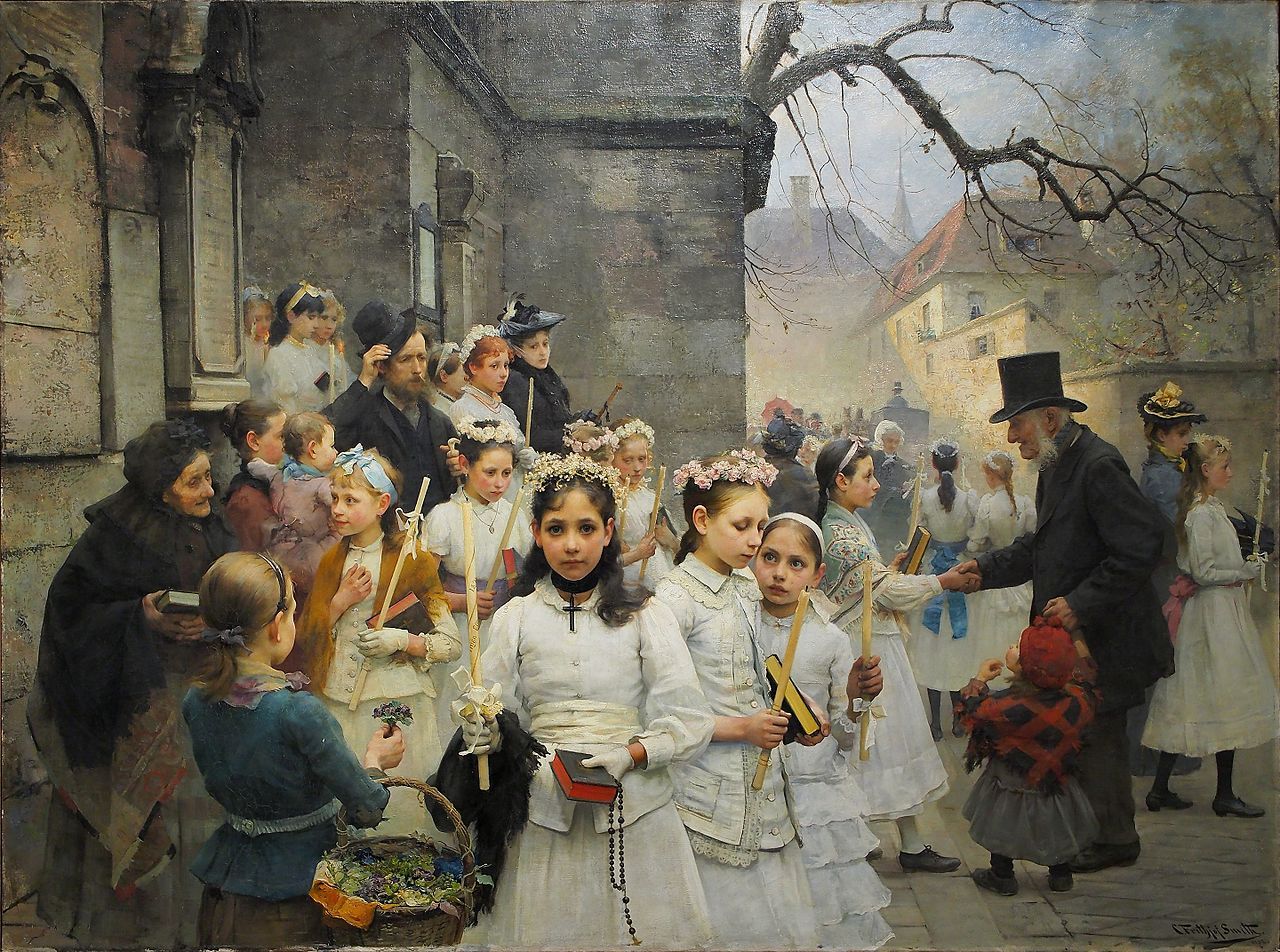
Carl Frithjof Smith, After first Communion, 1892

Emile Claus, First Communion, 1893

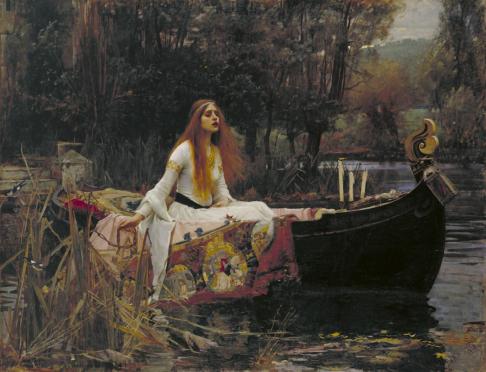

That first pic looks a bit like one one of the people in the background of Goya’s black pics. Dunno if it’s a before or after communion shot. If it’s before,she looks like she’s not gonna make it to the altar- if it’s after ,looks like she’s od on the flesh of Christ,and is spiralling down on a horror trip into Lacan’s “Real”. Kinda good though.
LikeLiked by 1 person
This is truly a remarkable painting. Though aesthetically I prefer the other First Communion paintings, Eugène Carrière ‘s work has stronger connections in my mind, probably because I am a huge fan of well-crafted American horror/mystery movies. You mention « The Others » but I think of the American remake of the Japanese « Ring » trilogy. Naomi Watts plays Rachel Keller in this disturbing movie. Rachel aims at solving a mystery : in her surroundings young people die seven days after having watched a mysterious tape. The connection to Carrière’s painting is: photographs taken of the teenagers during this seven-days-period show shockingly distorted faces though in reality those kids looked normally and even cheerful when the pics were taken. The photographs capture a vision of their nearby fate, and personally I interpret Carrière’s painting as a vision that something terrible will happen to that girl, perhaps on that same day or in a near future.
LikeLiked by 2 people